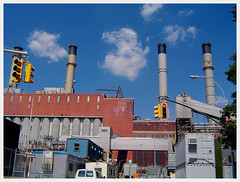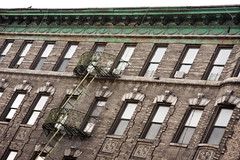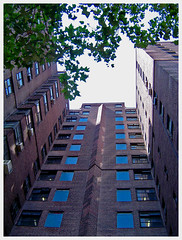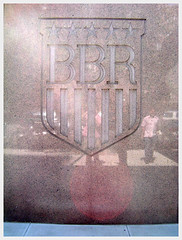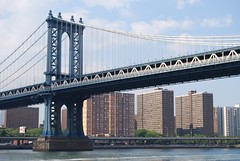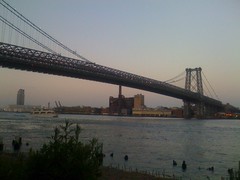Stuyvesant Town
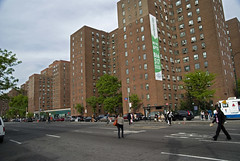
Built in the late 1940s by Met Life Insurance Co. as affordable housing for returning World War II vets; now being converted to high-priced market rentals. To build these highrises, Met Life leveled the notorious Gashouse District-- which chemical fumes made one of Manhattan's least desirable neighborhoods. The district produced the fearsome Gashouse Gang; since there was little to steal on their own turf, they would travel to other neighborhoods and rob the criminals there.
In The Death and Life of Great American Cities, Jane Jacobs uses Stuyvesant Town, with its lack of nonresidential development, its scarcity of streets and its repetitive architecture, as an example of how not to fix cities.
